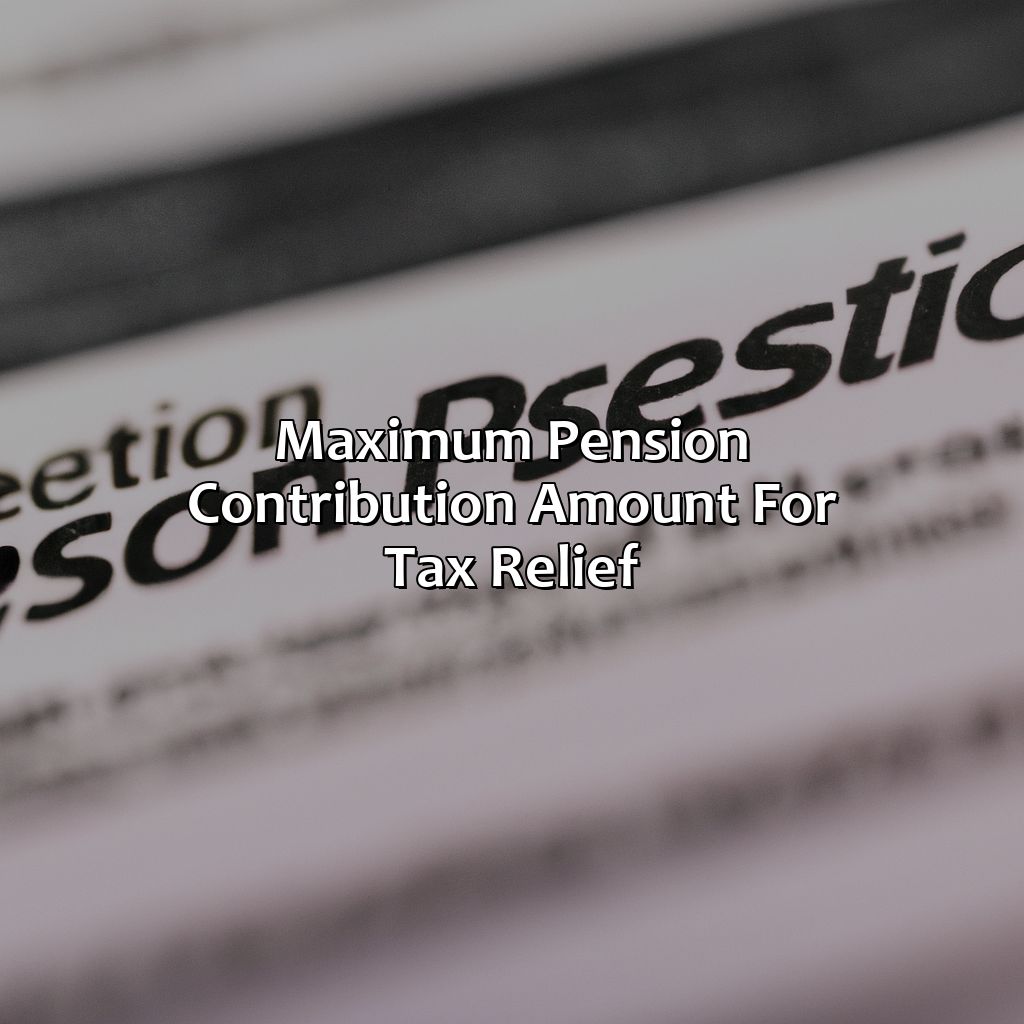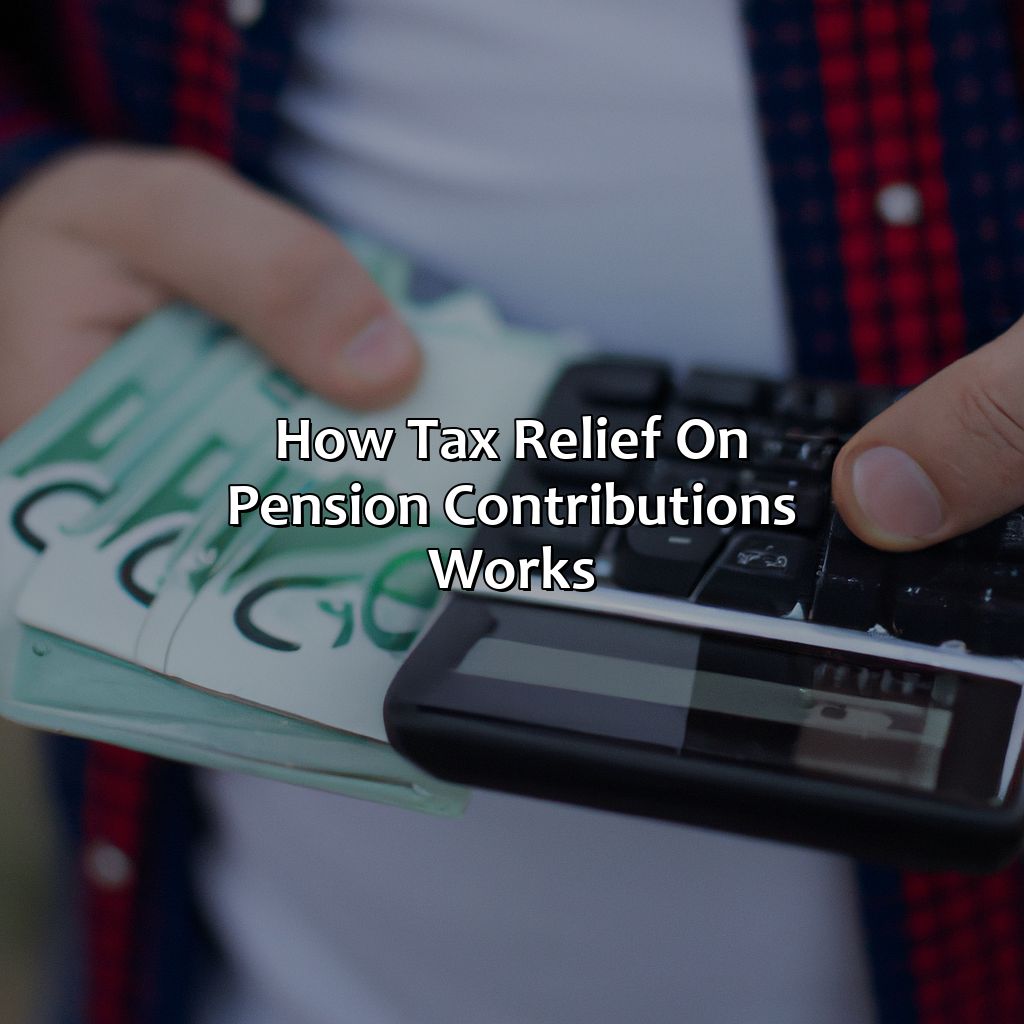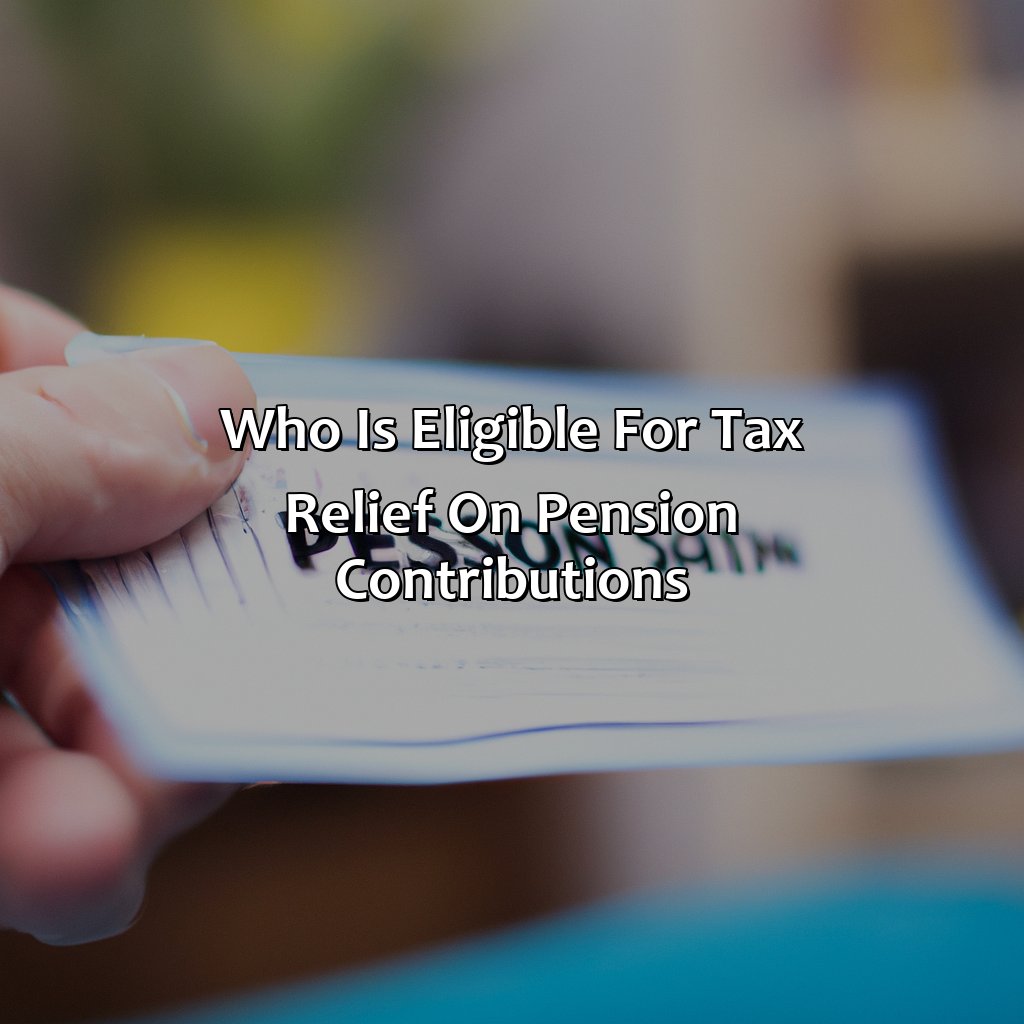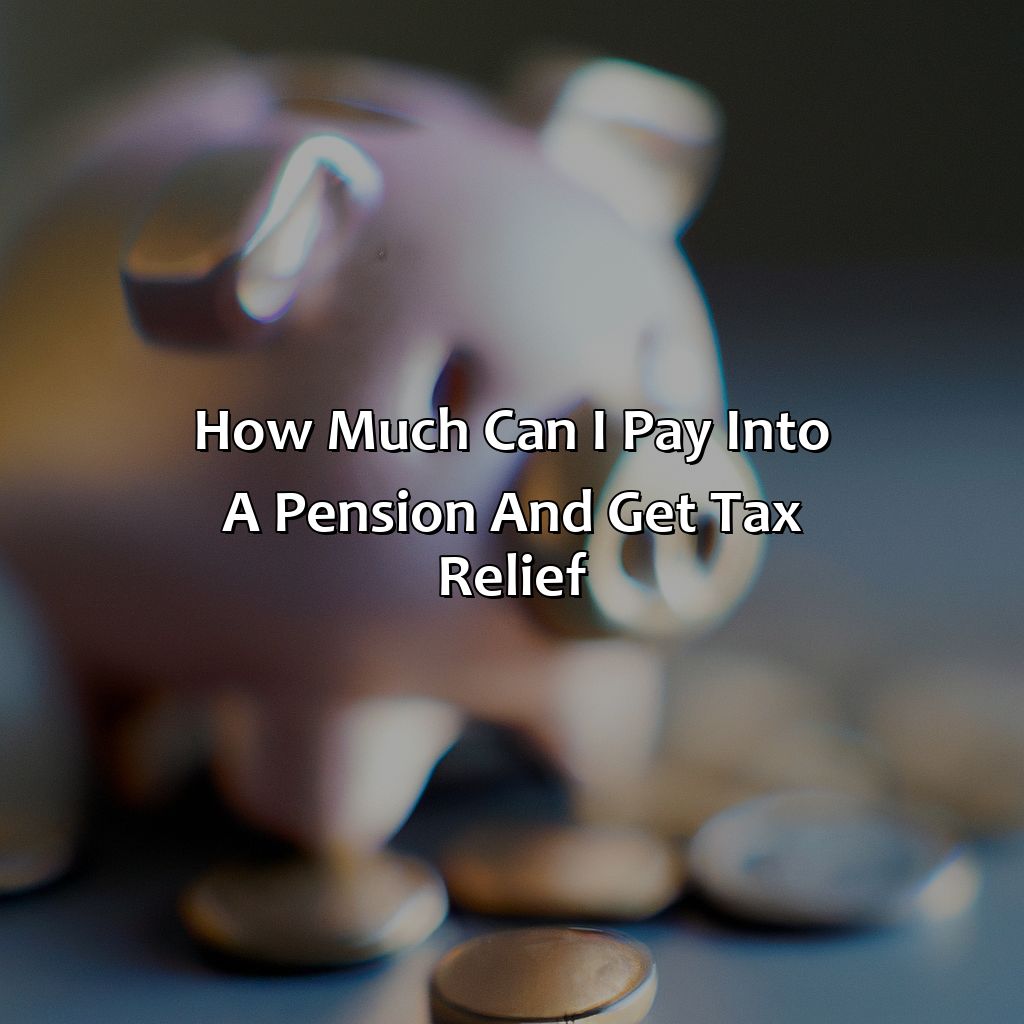How Much Can I Pay Into A Pension And Get Tax Relief?
Key Takeaway:
- The maximum pension contribution amount for tax relief is 40,000 per year, although there are certain exceptions and additional rules which may affect this amount. This limit includes contributions from the individual, their employer, and any third-party contributions.
- Tax relief on pension contributions works by reducing an individual’s taxable income by the amount of their contribution. For example, if an individual earning 50,000 per year contributes 10,000 to their pension, they will only be taxed on 40,000 of their income.
- Anyone who pays into a pension scheme is eligible for tax relief on their contributions, although the amount of relief they receive may be affected by their income level, their pension scheme, and any existing pension contributions.
With the rising cost of living and uncertainty about the future, you may be wondering how much you can contribute to a pension and still get tax relief. This article will help you understand and navigate the pension contribution limits to get the most out of your retirement savings.
Maximum pension contribution amount for tax relief
The maximum amount of pension contribution that is eligible for tax relief determines how much an individual can deposit into their pension pot while also reducing their tax bill. For information on how much can be contributed for disability pension, consult with a financial advisor.
| Maximum Pension Contribution Amount for Tax Relief | Applicable Limits |
|---|---|
| Annual allowance | 40,000 |
| Lifetime allowance | 1,073,100 |
| Carry forward of unused allowance | Up to 3 previous years |
Individuals who earn an income above a threshold amount may have a lower annual allowance for pension contributions and may be subject to additional restrictions. It is crucial to speak to a financial advisor to determine the appropriate level of contribution that maximizes tax relief benefits. Learn more about how much SSS pension you will get through this helpful guide.
In 2011, the UK government reduced the annual pension contribution allowance from 255,000 to 50,000, which was further decreased to 40,000 in 2014. The move was intended to deter high-income individuals from exploiting tax-relief benefits.

Image credits: retiregenz.com by Joel Woodhock
How tax relief on pension contributions works
Pension contributions can benefit from tax relief. This helps to reduce your tax bill and boost your pension pot. The amount of tax relief you receive depends on your income tax bracket and the amount you pay into your pension. The government adds basic rate tax relief to your pension contributions automatically. If you re a higher or additional rate taxpayer, you can claim any extra tax relief through your tax return.
It s important to understand that tax relief only applies up to certain limits. There is an annual allowance that sets the maximum amount you can contribute to your pension each year and receive tax relief. This limit is currently 40,000 or 100% of your salary, whichever is lower. There is also a lifetime allowance, which puts a cap on the total amount you can save in your pension over your lifetime whilst still receiving tax relief. This limit is currently 1,073,100.
It’s worth noting that the rules around pension contributions and tax relief have changed over time. For example, the annual allowance has been reduced for higher earners since 2016. It’s important to keep up to date with any changes to the rules so that you can take advantage of any tax relief available to you.
In the past, some high earners have faced unexpected tax bills as a result of breaching the annual and lifetime allowance limits. However, there are ways to mitigate this risk, such as carrying forward any unused allowance from previous years. Seeking professional financial advice can be helpful in navigating the complexities of pension contributions and tax relief.

Image credits: retiregenz.com by Adam Arnold
Who is eligible for tax relief on pension contributions
Pension Tax Relief Eligibility and Guidelines
Individuals who make contributions to a private pension fund are eligible for tax relief. The amount of tax relief you receive depends on the contributions you make and your income level. Those who qualify for higher tax brackets receive more relief. Employees who earn below the tax allowance and those who are self-employed or working on a contract basis are also eligible for tax relief on their pension contributions.
The pension tax relief system requires that tax will only be paid on withdrawals beyond the allowed tax-free lump sum. One can receive up to 25% of the pension pot as a tax-free lump sum before tax is paid on any further withdrawals. To learn more about how much you can earn while on pension credit, consult a financial advisor.
It’s worth noting that anyone can contribute to a pension, regardless of their employment status or tax bracket. In addition, contributions made by employers towards an employee’s pension are also eligible for tax relief. If you’re wondering how much Canada Pension Plan you will receive, it’s important to consider your employment history, age, and contributions made over the years.
Historically, the tax relief limit was capped at 40,000 per annum, but this limit has been reduced to 10,000 for high earners. To avoid taxation, individuals can opt to receive their pension in stages rather than as a lump sum. As the limit of tax relief changes occasionally, it’s important to stay up-to-date with the latest information available.

Image credits: retiregenz.com by Adam Duncun
Benefits of contributing to a pension
Contributing to a pension can provide several benefits that can lead to a financially secure retirement. By taking advantage of tax relief and employer contributions, individuals can boost their savings while also reducing their taxable income.
– Tax Relief: By contributing to a pension, individuals can receive tax relief on their contributions, meaning they pay less income tax. The amount of tax relief received is based on their income tax rate.
– Employer Contributions: Many employers offer pension schemes that include employer contributions. These contributions can help boost savings without individuals needing to increase their own contributions. Wondering how much you can earn while claiming state pension? Check out our website for more information.
– Compound Interest: By starting to save for retirement early, individuals can take advantage of compound interest, which allows for exponential growth of savings over time.
– Flexibility: Pension schemes now offer more flexibility in terms of how and when individuals can access their funds. This can allow for a more tailored approach to retirement planning.
– Security: Contributing to a pension can provide a sense of security knowing that there is a long-term savings plan in place.
It is important to consider the type of pension scheme and the investment strategy when planning for retirement. For example, some pension schemes offer more flexibility than others and may allow for individuals to take a tax-free lump sum. Additionally, the investment strategy will play a role in the performance of the pension fund and should be reviewed regularly.
Samantha started contributing to her pension early in her career and was able to take advantage of compound interest. By the time she retired, her retirement income was significantly higher than she had anticipated, which allowed her to enjoy the retirement she had always dreamed of.

Image credits: retiregenz.com by Yuval Jones
The importance of seeking professional financial advice
Seeking professional financial advice is crucial for making informed decisions about managing one’s finances. The expertise of a financial advisor can guide an individual in setting financial goals, selecting suitable investments, and managing risks. Professional advice can also help individuals to understand complex financial concepts and terms that may be difficult to comprehend without expert assistance. Due to the volatile nature of financial markets, it is essential to seek help from a professional with a proven track record of success over the long term.
It is crucial to select a financial advisor who has a fiduciary duty to act in a client’s best interest. This obligation ensures that the advisor puts the client’s interests ahead of their own, eliminating conflicts of interest. A professional advisor can also help an individual take advantage of tax-efficient savings options such as pensions, which provide a range of tax benefits. With the ever-changing financial environment and regulations, the advisor can provide insights that may help the individual save money and maximize returns.
It is advisable to discuss financial goals with the advisor, which may involve saving for a specific goal such as retirement or a college fund for children. A strategic plan can be developed with the help of an advisor, which considers short-term and long-term objectives, and a thorough risk assessment to ensure that the plan is suited to an individual’s risk profile. Additionally, a professional advisor can track progress and adjust the plan whenever necessary.
If you are wondering what is a pay as you go pension plan, discussing with a financial advisor can give you a better idea about it.
Pro Tip: When seeking professional financial advice, ensure that the advisor is a good fit for your needs, has the relevant qualifications and experience, and comes highly recommended. Always ask about fees and charges upfront and be wary of advisors who make unrealistic promises.

Image credits: retiregenz.com by David Jones
Some Facts About How Much Can I Pay Into a Pension and Get Tax Relief:
- ✅ The annual allowance for paying into a pension and receiving tax relief is currently 40,000 or 100% of your earnings, whichever is lower. (Source: Money Advice Service)
- ✅ You can carry forward any unused annual allowance from the three previous tax years, as long as you were a member of a pension scheme during those years. (Source: HM Revenue & Customs)
- ✅ High earners may be subject to a tapered annual allowance, which reduces their allowance by 1 for every 2 of income over 150,000 per year. (Source: The Pensions Advisory Service)
- ✅ You can also receive tax relief on pension contributions made by your employer, up to certain limits. (Source: PensionBee)
- ✅ Pension contributions made through salary sacrifice can also provide tax benefits, as they reduce your taxable income. (Source: MoneySavingExpert)
FAQs about How Much Can I Pay Into A Pension And Get Tax Relief?
How much can I pay into a pension and get tax relief?
For the tax year 2021/22, you can pay up to 40,000 or 100% of your annual earnings (whichever is lower) into a pension and receive tax relief on your contributions.
What is tax relief on pension contributions?
Tax relief means the government adds money to your pension pot as a reward for saving for retirement. The amount of tax relief you receive is based on your income tax rate. Basic rate taxpayers receive 20% tax relief, while higher and additional rate taxpayers can claim 40% or 45% respectively.
Can I carry forward unused pension allowance?
Yes, if you didn’t use your full pension allowance in the previous three tax years, you can carry forward the unused amount and add it to your current year’s allowance. However, you can only carry forward if you were a member of a registered pension scheme during the years you want to use the allowance from.
Is there a maximum amount of pension tax relief I can receive?
Yes, there is a lifetime allowance limit of 1,073,100 (for the tax year 2021/22) on the total amount of pension benefits you can receive without triggering an extra tax charge. If your pension pot grows above this limit, you may be subject to a tax charge of up to 55% on any excess funds.
Can I claim tax relief on pension contributions if I’m self-employed?
Yes, you can claim tax relief on your pension contributions if you’re self-employed. You’ll need to make the payments into a registered pension scheme, and you can claim tax relief on contributions of up to 100% of your earnings or 40,000 (whichever is lower).
What happens if I exceed my pension allowance?
If you exceed your pension allowance, you’ll be subject to an annual allowance charge. The charge is equal to your marginal income tax rate (20%, 40% or 45%) on the amount of pension contributions that exceed your allowance. The charge is added to your tax bill for the year and can be paid from your pension fund if you choose.
